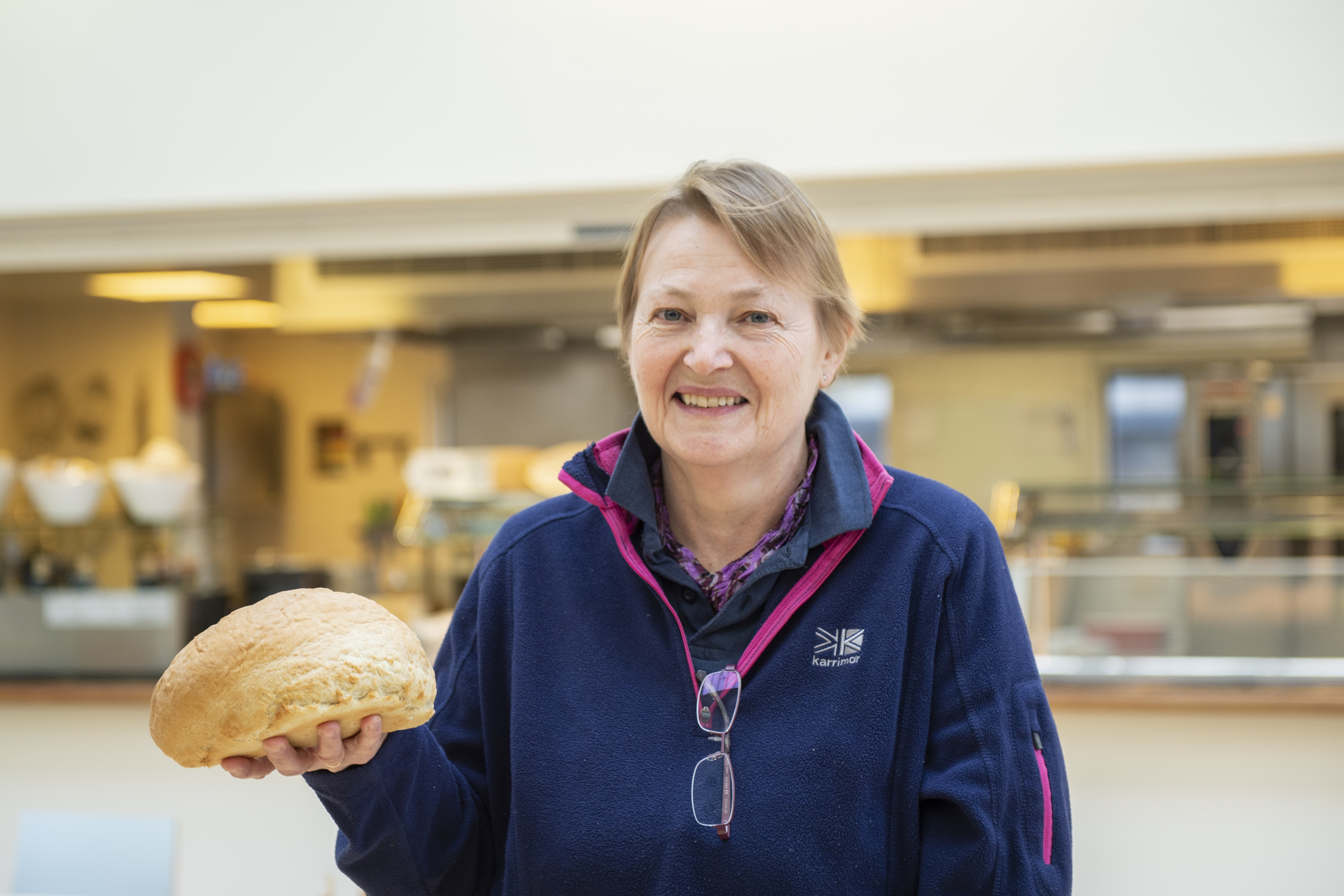The big picture: using wildflower strips for pest control
It might be the best thing to happen to bread since, well, sliced bread.
An international group of scientists led by Rothamsted Research and the John Innes Centre have opened the door to healthier white bread, after they pinpointed genes responsible for the dietary fibre content of flour.
They say this new white flour is otherwise identical and makes a good quality white loaf – but with all the added health benefits that come from eating wholemeal bread, including reduced cancer, diabetes and obesity risks.
The high fibre white flour they produced has as much as twice the fibre of traditional white flour.
Writing in the journal PLOS ONE, lead author Dr Alison Lovegrove, Rothamsted Research, said the team had achieved the breakthrough by exploiting the results of an earlier genetic screen of over 150 different wheat varieties from around the world.
“We knew that the white flour made from one particular Chinese wheat variety, Yumai 34, was unusually high in fibre, but it’s not well suited for growing in the European climate,” she said.
“Using conventional breeding techniques, we crossed this high fibre trait into several other varieties. This allowed us to narrow down where in its genome the genes for high fibre are.”
Traditionally, crop varieties are improved by identifying plants with desirable traits and breeding from them. The problem with high fibre is it is not a trait you can identify by eye – and biochemical lab tests for it are slow and expensive.
“We’ve developed genetic markers that can easily be used by plant breeders to identify which individual wheat plants have the high fibre genes,” said Dr Lovegrove.
That will allow them to incorporate the high fibre into elite wheat lines - and opens the possibility of significant increases in dietary fibre intake for everyone, she added.
The quest to increase fibre in white bread through breeding had stalled in recent years – with various manufacturers instead producing loaves that contain both white and wholemeal flours, or have fibre from other sources added, in an attempt to address the issue.
Dr Lovegrove said: “We hope to go on and identify further genes that increase fibre content, thereby providing plant breeders, millers and food producers with even more options.”

The effort behind the study was no simple matter, however, as the wheat genome is much bigger than the human genome – containing six copies of every chromosome rather than the two copies humans possess.
This means wheat has in the region of 150,000 genes, compared to about 25,000 genes in humans.
By looking for sections of genetic code shared by plants with the high fibre trait, the team were able to home in on the likely spots where high fibre genes reside.
The researchers found two sites in particular - on chromosomes 1B and 6B - that were strongly linked with high fibre in flour.
The conventional breeding of a new wheat variety is a slow process with breeders having to select wheat lines with high yield and disease resistance, but the team are hopeful high fibre bread and other products made from white flour will be a staple within just five years now that breeders have a new tool with which to screen wheat lines.
Dietary fibre describes those carbohydrates we get from plant-based foods that aren’t digested in the small intestine and has been shown to have a number of health benefits, including lowering blood pressure, improving insulin sensitivity and reducing the incidence of certain types of cancer.
Although the mechanisms are incompletely understood they include a reduction in the time taken for food to pass through the intestines; binding cholesterol and carcinogens; promoting the growth of healthy bacteria in the gut; and reducing the rate of both digestion and glucose release in the small intestine.
Most of the fibre found in wheat grain is in the bran – the part that is removed when producing white flour, and what differentiates it from wholemeal flour.
A slice of typical white bread has about 1g of fibre, whereas wholemeal has about 3g. A slice from a high fibre white loaf could contain up to 2g.
Government advice suggests adults should eat about 30g of fibre a day, but the average adult in the UK currently only eats about 18g.
Whilst wholemeal is widely regarded as being much better for us, white bread still outsells it, making up three quarters of the roughly 12 million loaves sold in the UK each day.
Taste, appearance, shelf life and price are the main reasons why consumers favour white bread, whilst the £8bn a year pre-packed sandwich industry prefers it as it refrigerates better.
This study was a collaborative project with researchers from Rothamsted, the John Innes Centre and the University of Bristol in the UK - who are all part of the BBSRC funded Designing Future Wheat programme – along with colleagues in Hungary, France and Turkey.

Biochemist

Botanist
Rothamsted Research is the longest-running agricultural research institute in the world. We work from gene to field with a proud history of ground-breaking
discoveries in areas as diverse as crop management, statistical interpretation and soil health. Our founders, in 1843, were the pioneers of modern
agriculture, and we are known for our imaginative science and our collaborative approach to developing innovative farm practice.
Through independent research, we make significant contributions to improving agri-food systems in the UK and internationally, with
economic impact estimated to exceed £3 bn in annual contribution to the UK economy. Our strength lies in our systems approach, which combines strategic research,
interdisciplinary teams and multiple partnerships.
Rothamsted is home to three unique National Bioscience Research Infrastructures which are open to researchers from all over the world:
The Long-Term Experiments,
Rothamsted Insect Survey and the
North Wyke Farm Platform.
We are strategically funded by the Biotechnology and Biological Sciences Research Council (BBSRC), with additional support from other national and
international funding streams, and from industry. We are also supported by the Lawes Agricultural Trust (LAT).
The Biotechnology and Biological Sciences Research Council is part of UK Research and Innovation, a non-departmental public body funded by a grant-in-aid
from the UK government.
BBSRC invests to push back the frontiers of biology and deliver a healthy, prosperous and sustainable future. Through our investments, we build and support a vibrant,
dynamic and inclusive community which delivers ground-breaking discoveries and develops bio-based solutions that contribute to tackling global challenges,
such as sustainable food production, climate change, and healthy ageing.
As part of UK Research and Innovation (UKRI), we not only play a pivotal role in fostering connections that enable the UK’s world-class research and innovation system
to flourish – we also have a responsibility to enable the creation of a research culture that is diverse, resilient, and engaged.
BBSRC proudly forges interdisciplinary collaborations where excellent bioscience has a fundamental role. We pioneer approaches that enhance the equality, diversity,
and inclusion of talent by investing in people, infrastructure, technologies, and partnerships on a global scale.
The Lawes Agricultural Trust, established in 1889 by Sir John Bennet Lawes, supports Rothamsted Research’s national and international agricultural science through the provision of land, facilities and funding. LAT, a charitable trust, owns the estates at Harpenden and Broom's Barn, including many of the buildings used by Rothamsted Research. LAT provides an annual research grant to the Director, accommodation for nearly 200 people, and support for fellowships for young scientists from developing countries. LAT also makes capital grants to help modernise facilities at Rothamsted, or invests in new buildings.